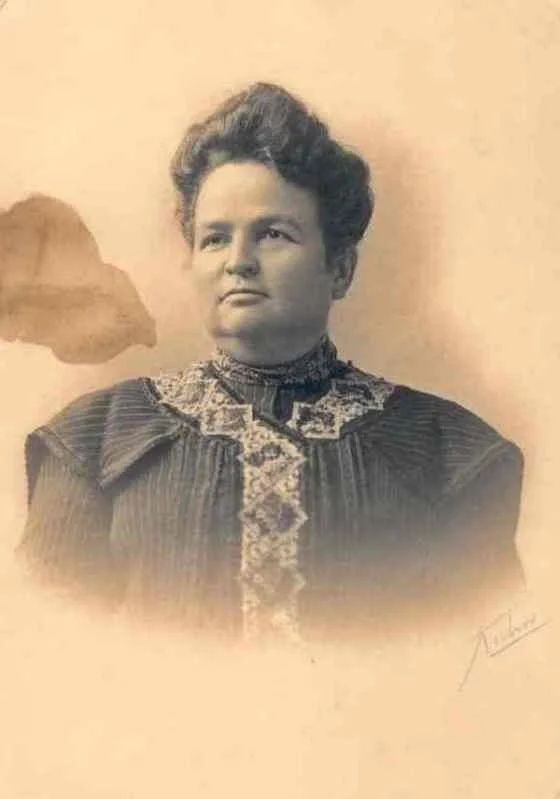The Rivertown Inn was built as a private residence in 1884 for John & Anna O’Brien. In the spring of 1882, they purchased 4 lots on the corner of Olive and Fifth streets in Stillwater, Minn., from Mrs. H. Wilson. Although we do not know the purchase price, the 4 lots were valued at a total of $1,300 on the 1883 tax rolls. Just after they purchased the property, the Stillwater Messenger of April 29, 1882, stated that, “Mr. O’Brien will at once erect a house on his lots on Olive Street...” Apparently, this did not happen “at once” as on April 23, 1884, the St. Paul Daily Globe reported in their Stillwater news column that, “John O’Brien will soon commence the erection of a new residence on Olive Street. According to the plans and specifications the new structure promises to be one of the finest and most commodious private dwelling houses in the city.”
Further evidence that the house was completed in 1884 are references printed in the Stillwater Directory as well as two local newspaper articles. The Stillwater Directory for 1884 includes the first listing of John O’Brien residing at the northwest corner of 5th and Olive Streets. The St. Paul Daily Globe on November 10, 1884, reported that, “John S. O’Brien’s new residence was excellently illuminated, gas aiding to the other lights…” and on December 15, 1884, they published a list of new construction in the past year in Stillwater which included the “John O’Brien, house, barn and improvements, Olive Street – $11,000.” The General Contractor was listed as August Jackson who also built a house at 717 W. Pine street for John O’Brien’s brother-in-law, John F. Burke, as well as another house on Pine St. for John O’Brien’s brother, James S. O’Brien. The architect was Frederick Sturnegk.
Apparently, the O’Brien family did not enjoy their new home for very long, as on April 11, 1885, the Stillwater Messenger reported that. “John O’Brien, whose family spent the winter at his logging camp near Stewart, Wisconsin, has decided to take up his abode at Stewart for some years and will probably sell his elegant new residence on the corner of Fifth and Olive streets.” On May 7, 1885, the St. Paul Daily Globe announced that, “Mr. John O’Brien and family left yesterday for their new home at Stewart, Wis.” By the middle of 1885, newspaper articles begin to refer to John and Anna O’Brien “of Veazie, Wisconsin.”
The St. Paul Globe of September 22, 1886, reported, “Newton McKusick has purchased the O’Brien property, corner of Olive and Fourth streets, now occupied by Mrs. Koons, for $9,000, and will move into it shortly.” Although the 1887 Stillwater Directory lists Newton as living at 306 W. Olive they were not in residence for very long as it was noted in the St. Paul Daily Globe, on July 3, 1887, that, “Newton McKusick and family are making preparations to remove to St. Paul and his residence on Olive street will be occupied by John O’Brien.” This is further corroborated by a note in the John Burke Papers dated Saturday, July 30, 1887, which states, “Newton McKusick sold his house on the corner of Fifth and Olive to John O’Brien the original owner.” The last known date the O’Briens were listed as “of Veazie, Wisconsin” was on July 3, 1887.
John O’Brien (Photo courtesy of Terri Cole)
The O’Briens lived in the house with their 6 children and 4 live-in servants. In 1896, they made major additions to the house which included a 2 story 6′ x 16′ addition to the west side of the house and a 2 story 14′ x 30′ addition to the back of the house. In 1901, the O’Briens founded the town of Somers, Montana, where they built a lumber mill as well as homes for their workers. In 1903, they also built a very large home for themselves in Somers.
Anna Kennedy O’Brien (photo courtesy of Terri Cole)
A Stillwater newspaper article dated October 14, 1901, states, “The John O’Brien residence has been leased for the winter to W.C. Jordan…” It was later noted that the O’Brien family was staying at the home of James S. O’Brien (John’s brother) and would be moving to Kalispell, Montana, on Monday, November 3, 1901. Sometime after the O’Briens moved west, they rented the house to William and Mary Bean who subsequently purchased the home in 1909. Mr. Bean was the son of a local Lumber Baron, whose home is now the Ann Bean Bed & Breakfast. The Beans moved into the house with their 2 sons as well as 2 servants. Shortly after purchasing the house, the Beans removed a 16′ x 32′ portion of the rear of the house and added a back porch. In 1920, they also replaced the roof using cedar shingles.
In the late 1930’s the house was sold to Harold & Grace Hohlt. In May of 1938, the Hohlts were issued a permit to divide the house into 3 apartments. They lived in one part of the house and rented the two apartments. In 1942, a fire in the basement destroyed the parquet floors in the front parlor and dining room. Over the years, many people rented the apartments and although they are too numerous to list here, if anyone has any information about this time period and the residents, please contact us.
In 1976, the house was purchased by Dick & Judy Anderson (current owners of the Lowell Inn and the Stillwater Riverboats). They began the restoration and used the home as a “Crisis Center” for juveniles who were awaiting their court dates.
In May of 1982, Sherwood and Gloria Vasgund purchased the home with the intention of opening Stillwater’s first Bed and Breakfast. It opened for business on July 1, 1982, making the Rivertown Inn the oldest Bed and Breakfast in Minnesota. The next owners of the Inn were Kerry & Patty Fenelon, who sold it in May of 1987 to Chuck and Judy Doherty (current owners of the Waterstreet Inn and Cover Park Manor B&B).
The Dohertys made many improvements to the Inn including adding seven bathrooms so that all of the rooms had a private bath. Five of these bathrooms had jetted tubs. They also added central air conditioning, many gas fireplace inserts and converted the carriage house into a home for their family.
In 1999, Jeff & Julie Anderson purchased the Rivertown Inn. They closed the business while the porches were being restored. They also replaced the old gazebo at this time. In Phase 1 of their renovation, they renovated and redecorated all of the main house bedrooms in the spirit of 19th and early 20th century authors. In phase 2, they painted the exterior, added garden statuary and redecorated the main floor. Subsequently, they installed two Grand Suites in the north half of the carriage house and enlarged the main house kitchen.




